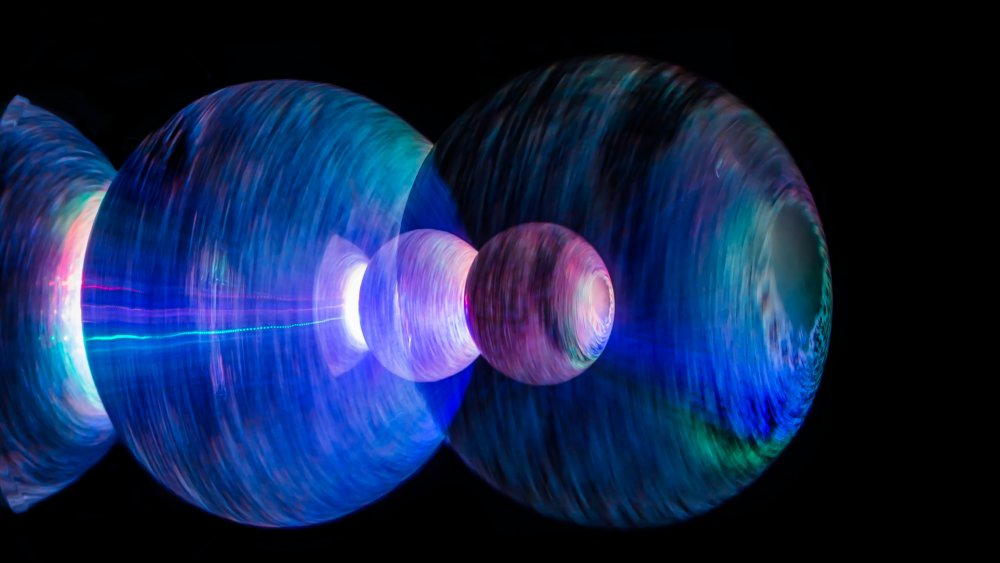The Truth About The Real 'Warp Drive'
It's the ultimate handwavey, science fiction trope. Engage the warp drive and you can move people through time and space faster than you can pronounce intergalactic mycelium network. Warp drives allow us to conceive of galaxy-spanning civilizations, unfettered by the laws of relativity. Without the ability to transcend the speed of light, we're stuck in our stellar nursery. Even our closest galactic neighbors are separated from us by generational distances. But a technology that has been stuck in the realm of speculative futurists like Isaac Asimov and Gene Roddenberry, may be edging closer to the realm of science fact.
According to Science Alert, researchers are beginning to take the concept of faster-than-light (FTL) travel more seriously. One FTL design that has been kicking around the backpages of speculative scientific journals for a while has gained exciting steam in recent months: the Alcubierre Warp Drive.
Scientist can't find a reason why the Alcubierre Drive shouldn't work
The Alcubierre design was the brainchild of Miguel Alcubierre, a Mexican physicist who proposed his concept for FTL travel in a 1994 paper. The design relies on speculative applications of the Einstein field equations, which remain our best mathematical models for how space, time and energy interact within our universe. Just in case you aren't versed in advanced field theory, here's the rub: the Alcubierre Drive doesn't actually move faster than light. What it actually does is stretch the fabric of space-time, creating a wave structure that contracts the space ahead of it. While the drive moves at subliminal speeds, the functional result is FTL travel since the space ahead of the drive has been contracted. You still with me? Great.
Any theoretical spaceship rocking an Alcubierre Drive would travel inside a kind of space-time bubble encapsulated by the wave. If this sounds a lot like the way warp speed looks on Star Trek and in the Star Wars flicks, you're not alone. Now, some young researchers are gearing up to make the Alcubierre Drive a reality.
This hypothetical FTL drive was the subject of a scientific presentation made in Indianapolis at this year's American Institute of Aeronautics and Astronautics Propulsion and Energy Forum. During a session on "The Future of Nuclear and Breakthrough Propulsion," University of Alabama in Huntsville engineer and research assistant Joseph Agnew shared the results of a feasibility study that he performed on the Alcubierre design. And guess what? He couldn't find a reason why the Alcubierre Drive shouldn't work.
A functional warp drive still a long way off
Agnew described in his presentation how he came to this esoteric field of study, "I know in my own case, I initially had grouped it, mentally, into the same category as typical superluminal concepts, since obviously they all violate the 'speed of light is the ultimate speed' assumption. It wasn't until I dug into the theory more carefully that I realized it did not have these problems. I think there would/will be much more interest when individuals delve into the progress that has been made. The historically theoretical nature of the idea is also itself a likely deterrent, as it's much more difficult to see substantial progress when you are looking at equations instead of quantitative results."
Obviously, the technology behind the Alcubierre Drive remains highly speculative. It will require tons of time and experimental physics to bring this FTL engine from the halls of "no reason it shouldn't work" to "we've got it working." Regardless of how far off we are, the fact that some scientific circles are taking the Alcubierre Drive seriously is pretty exciting. After all, speed limits were made to be broken. Engage.


